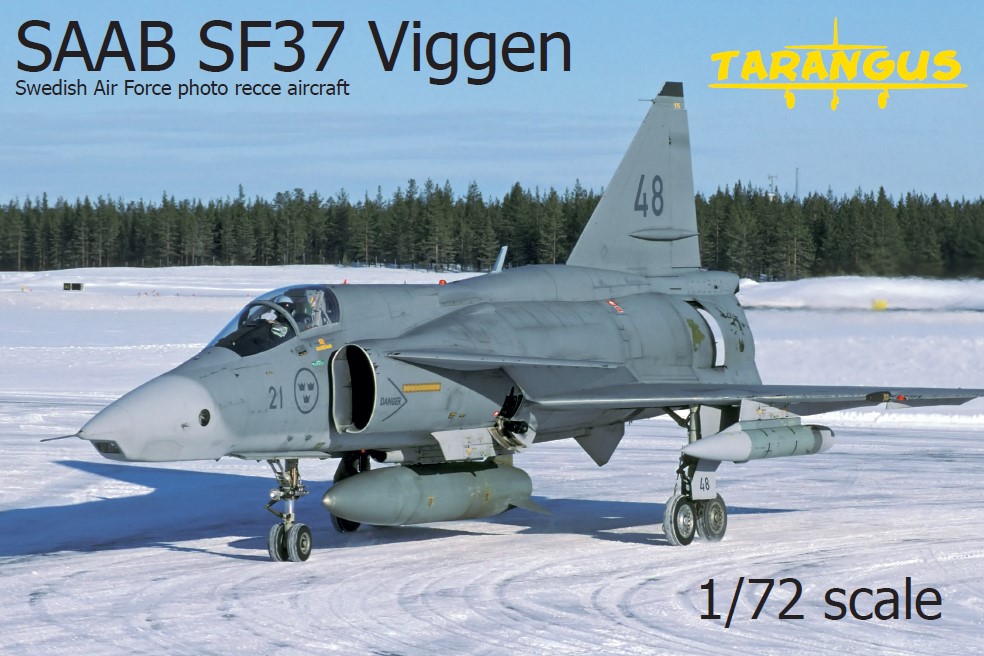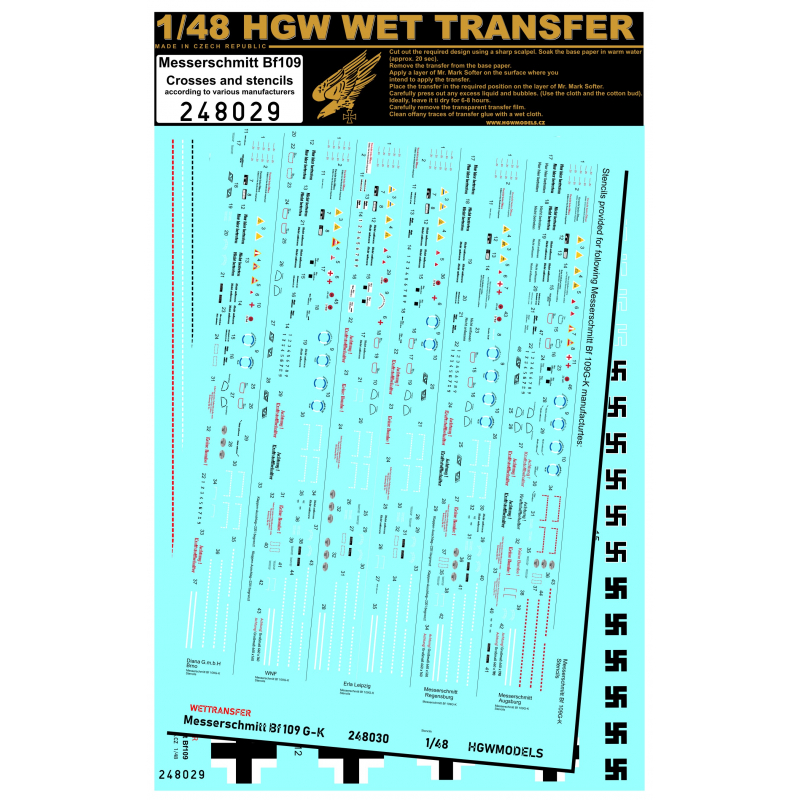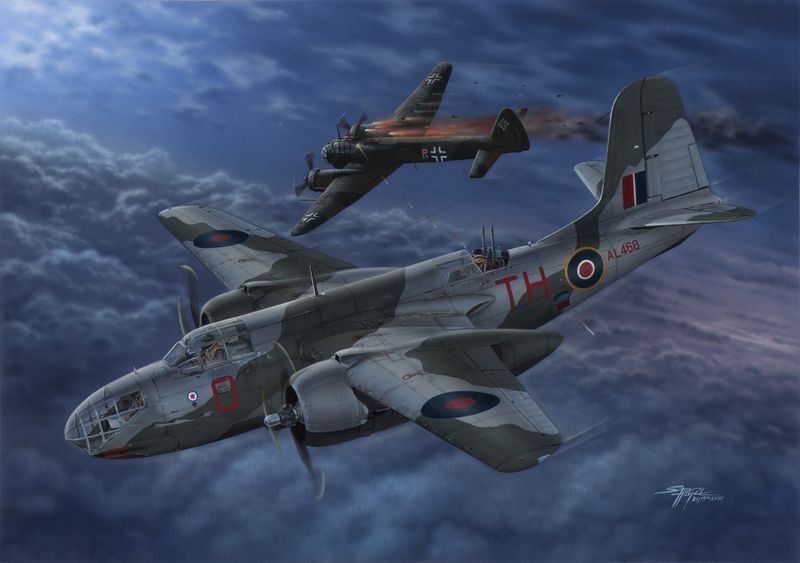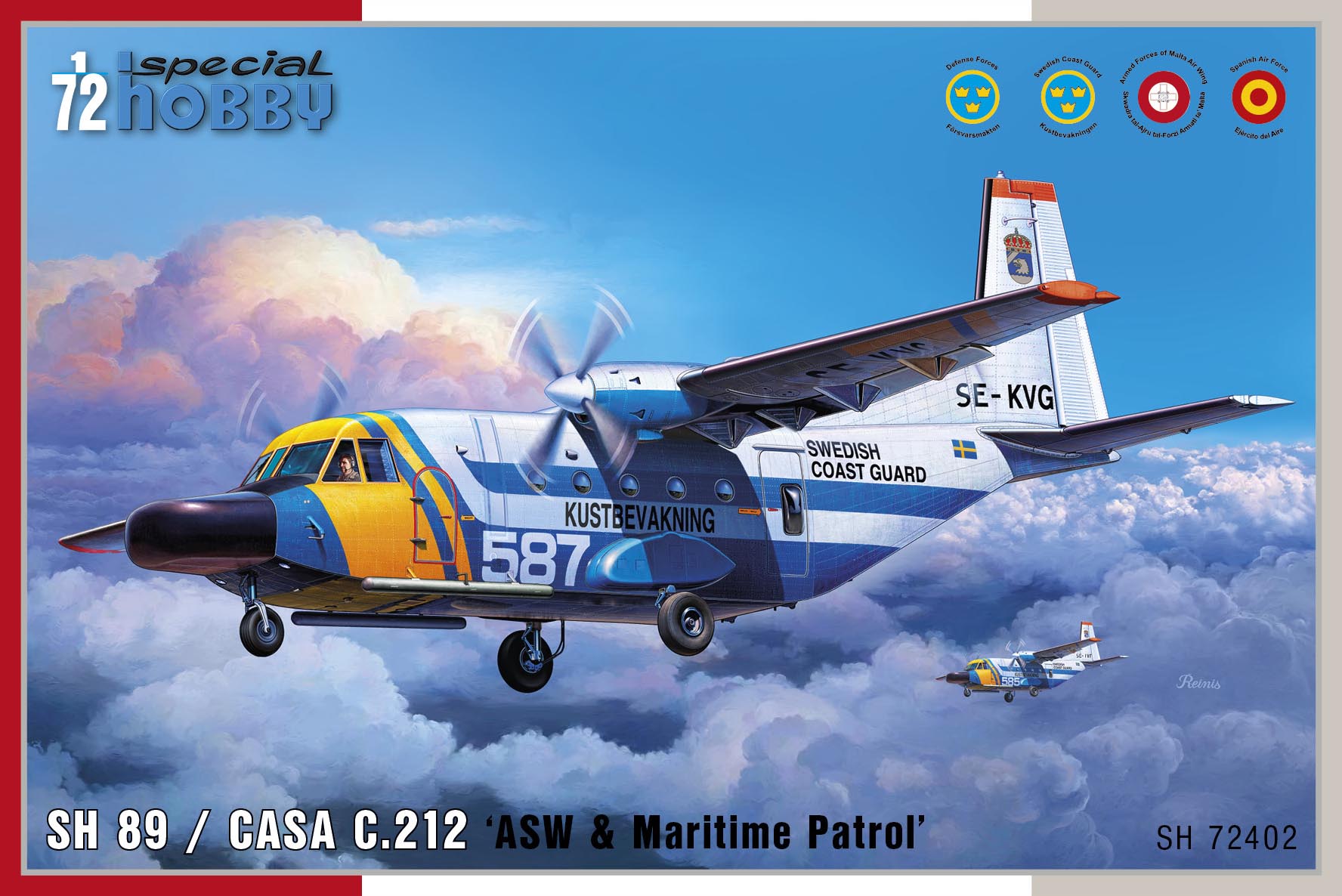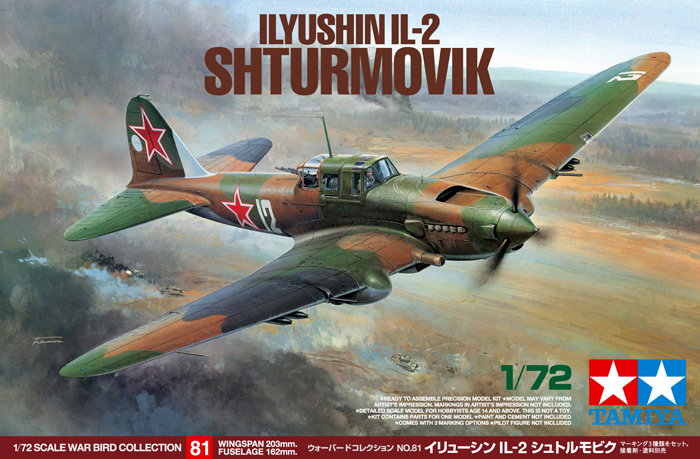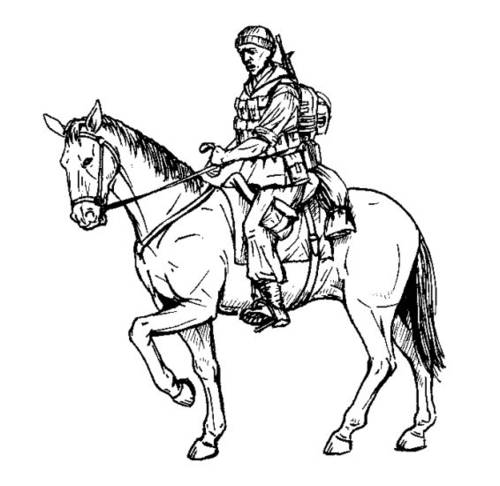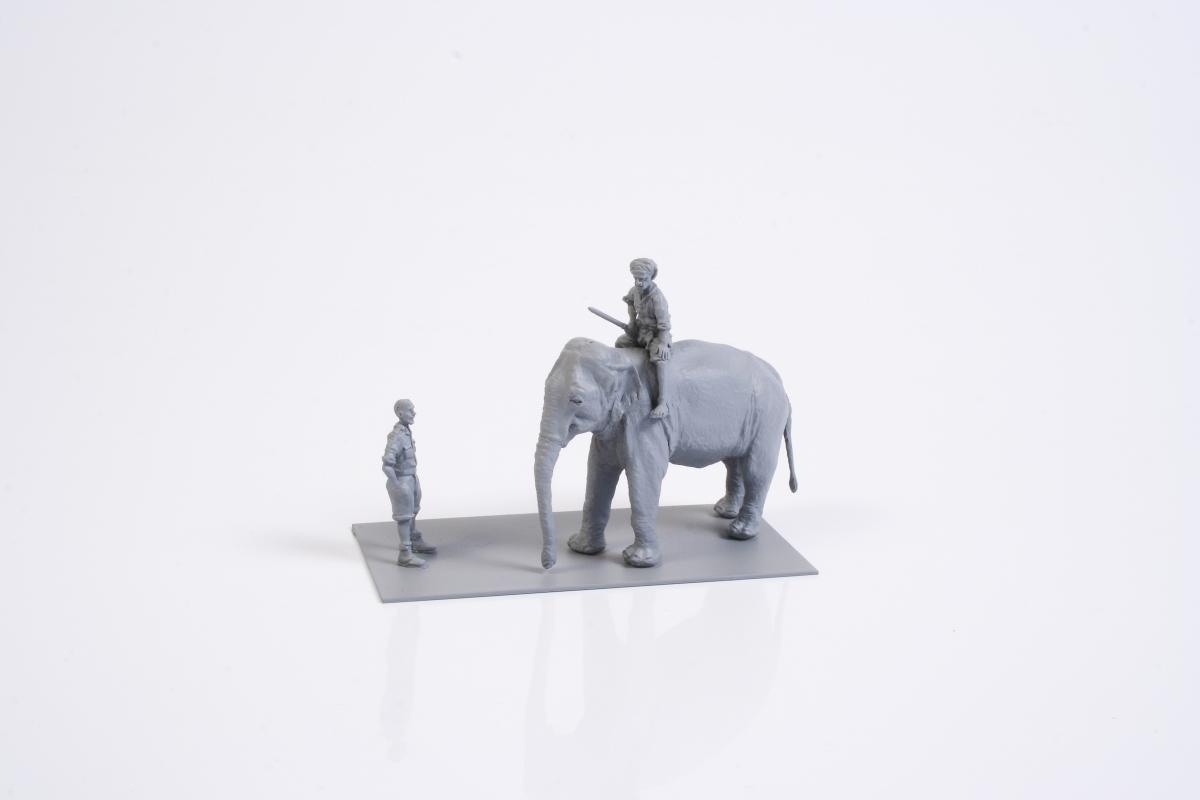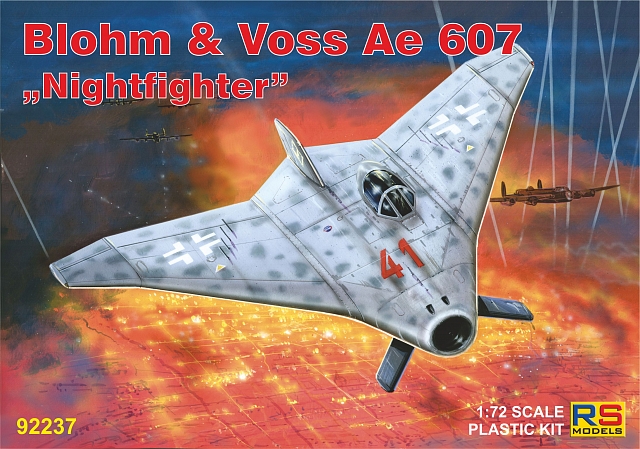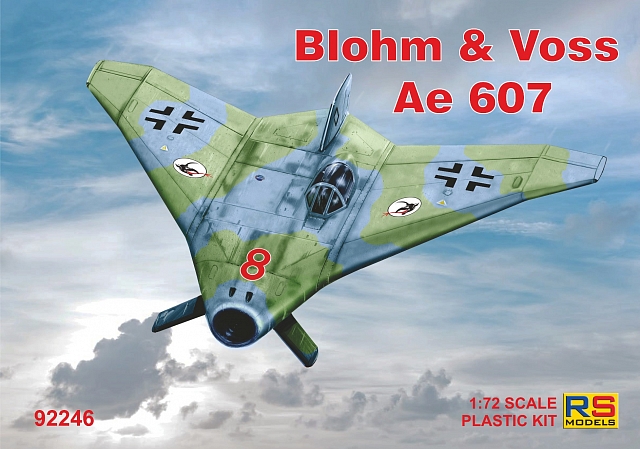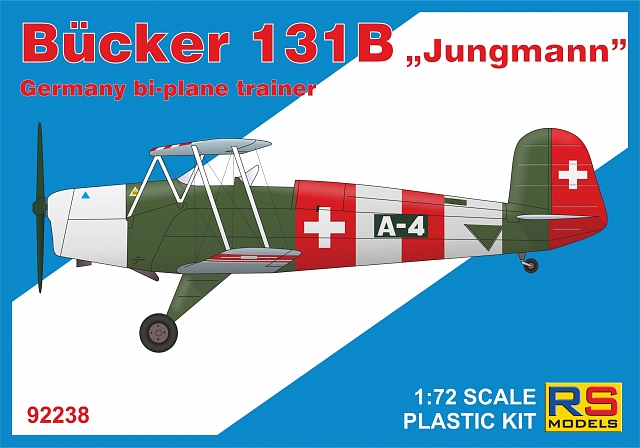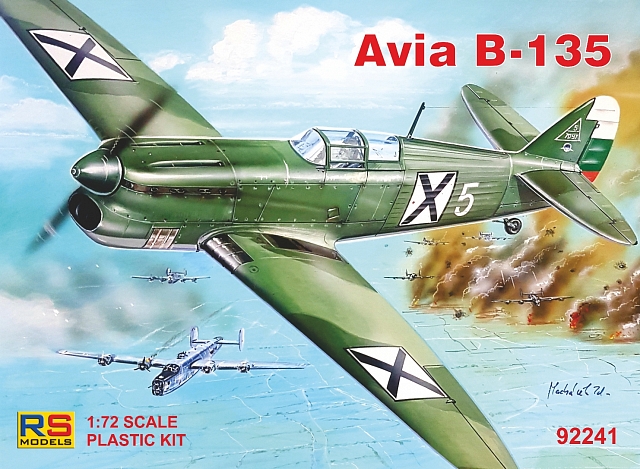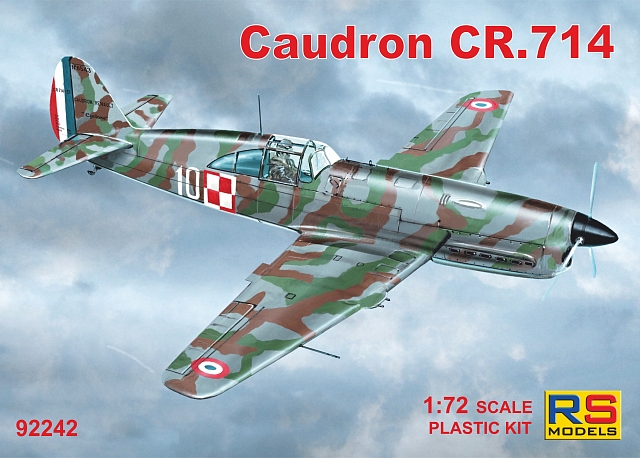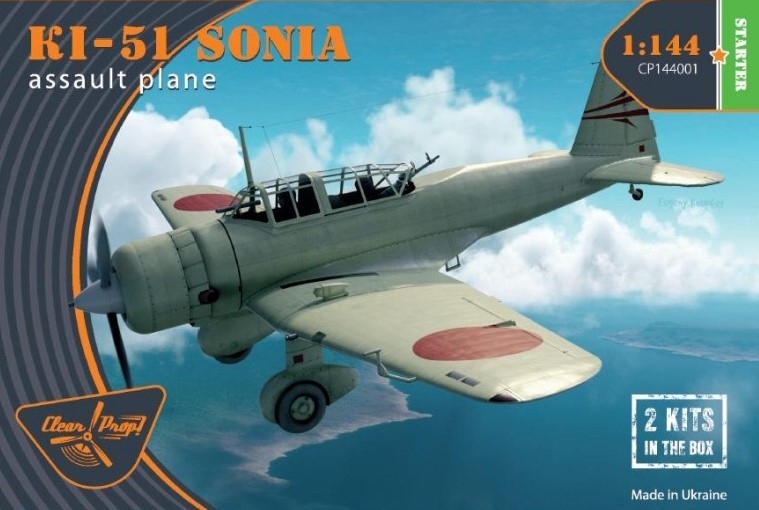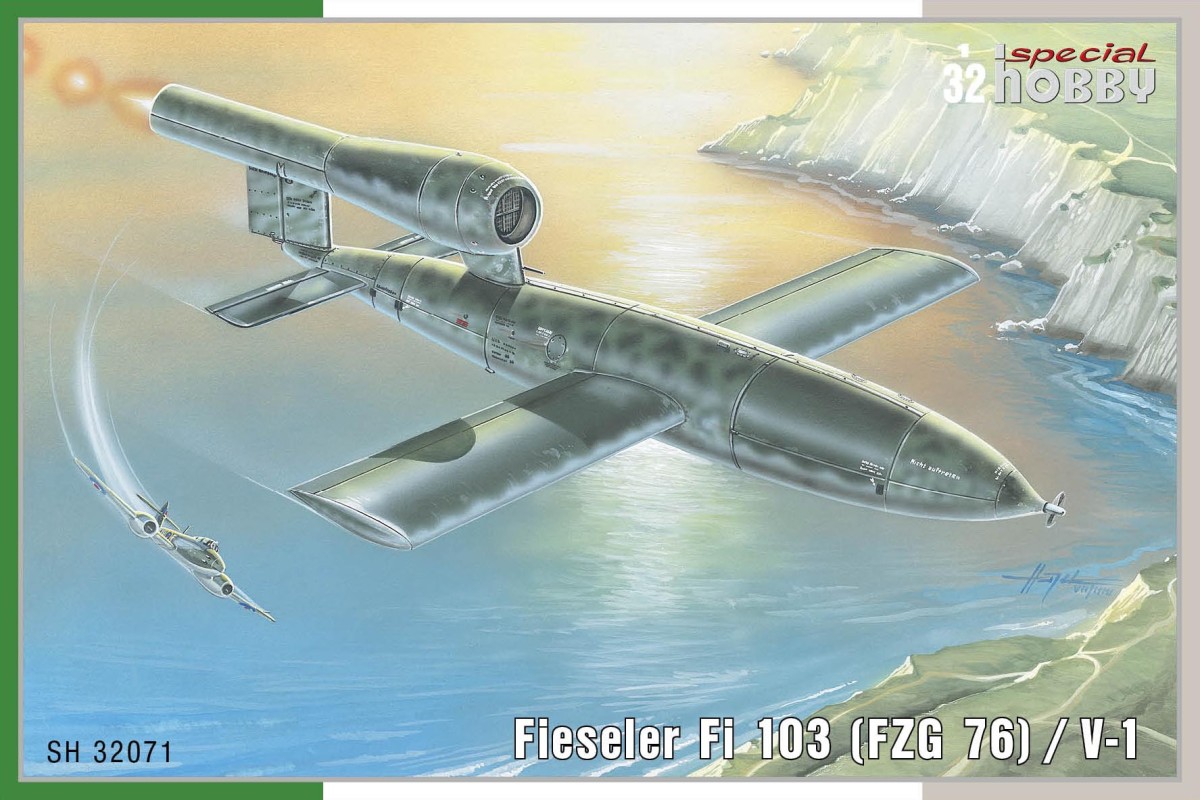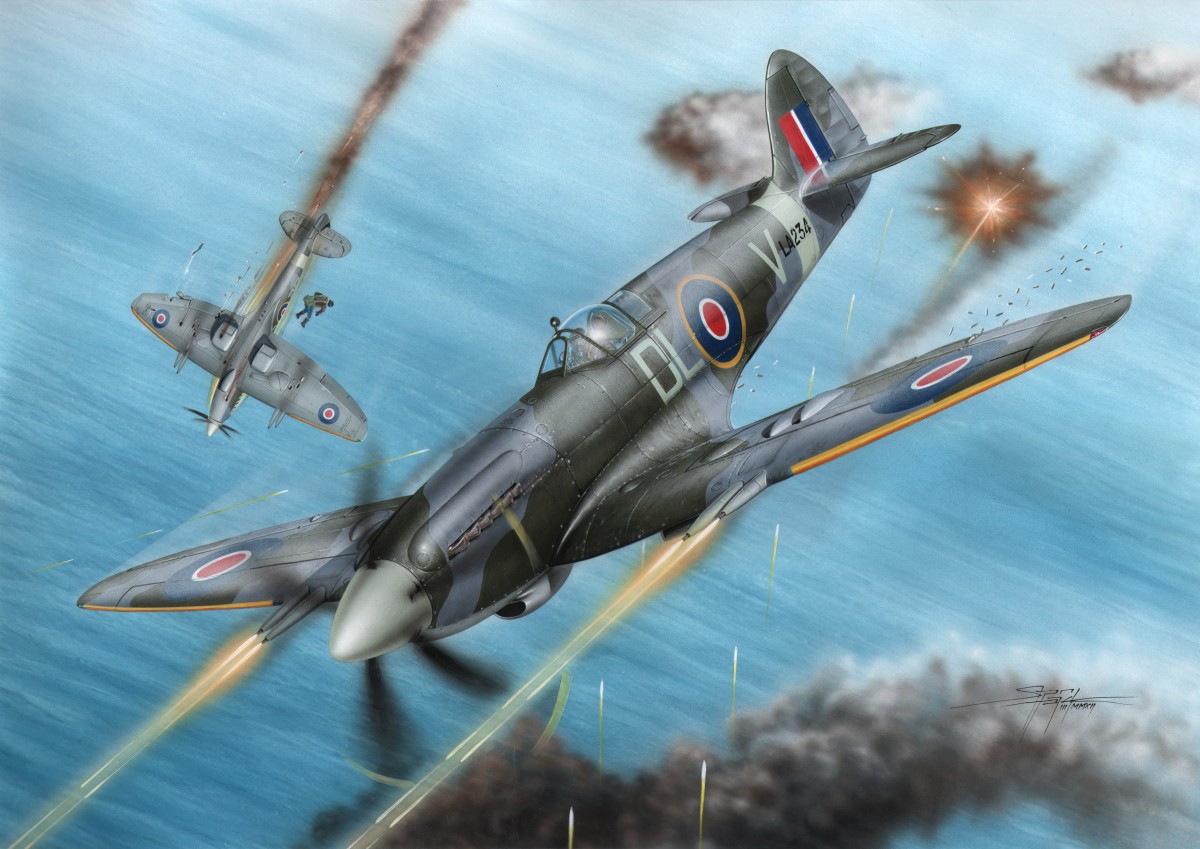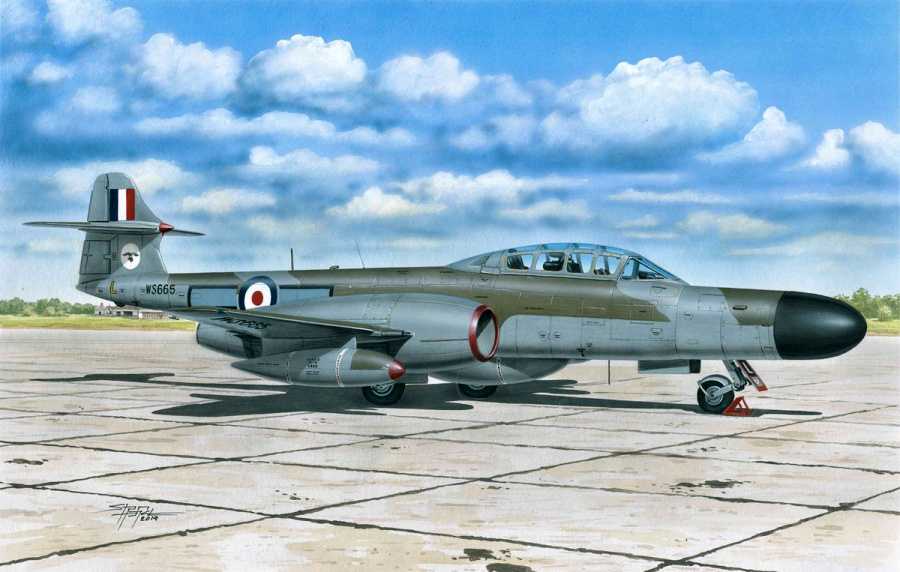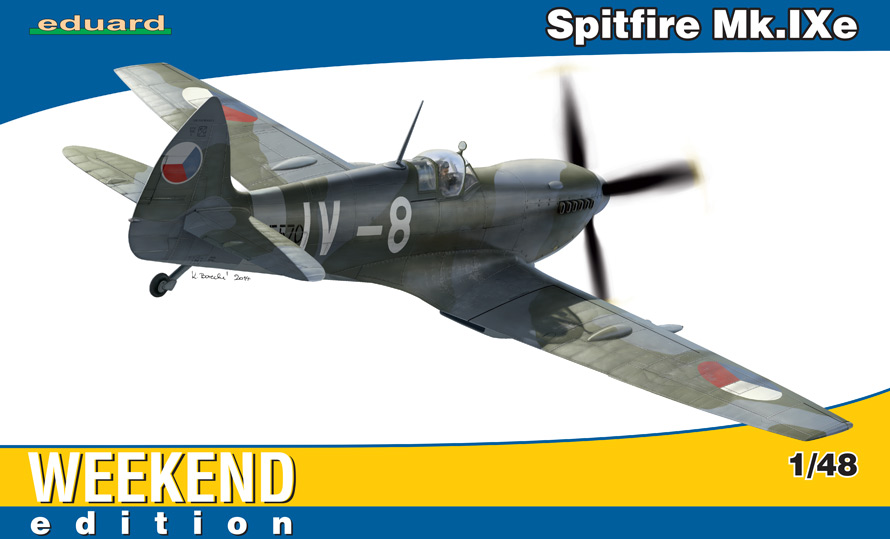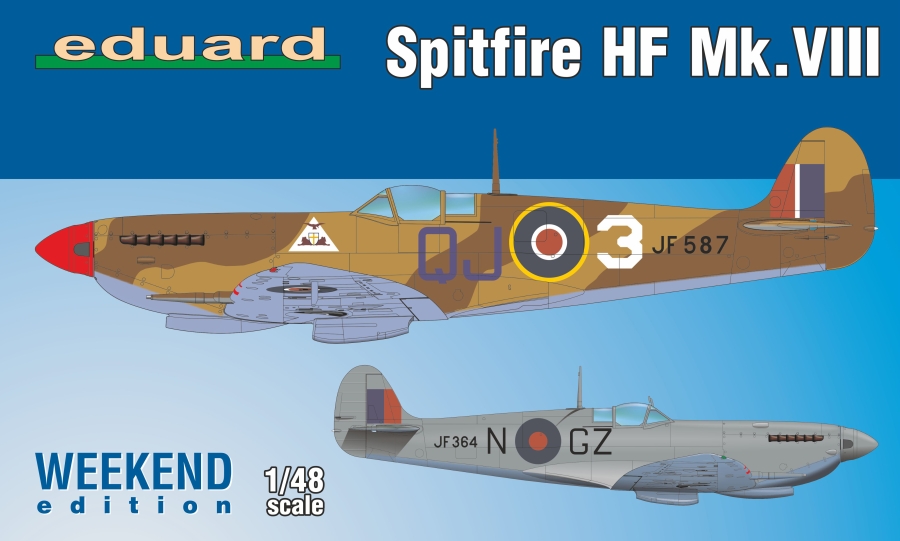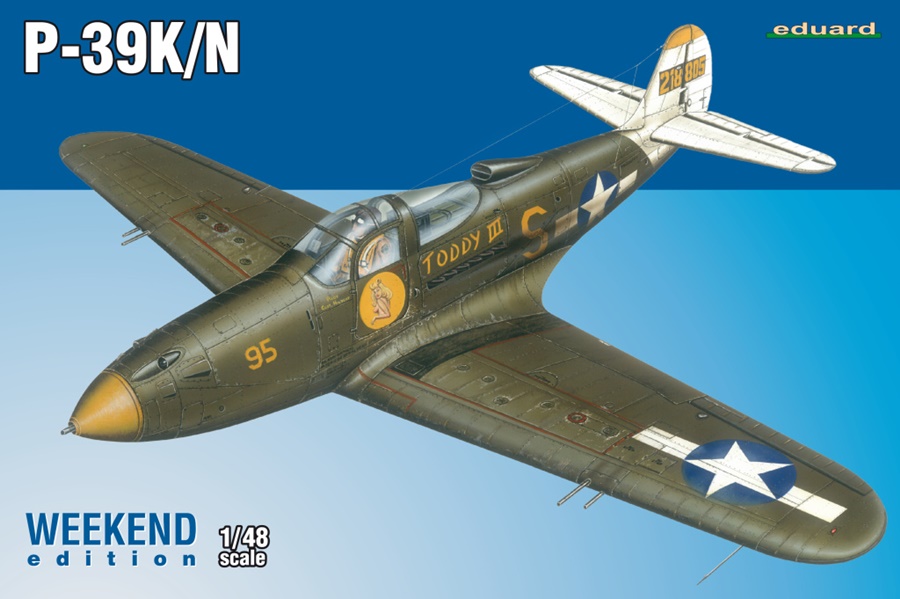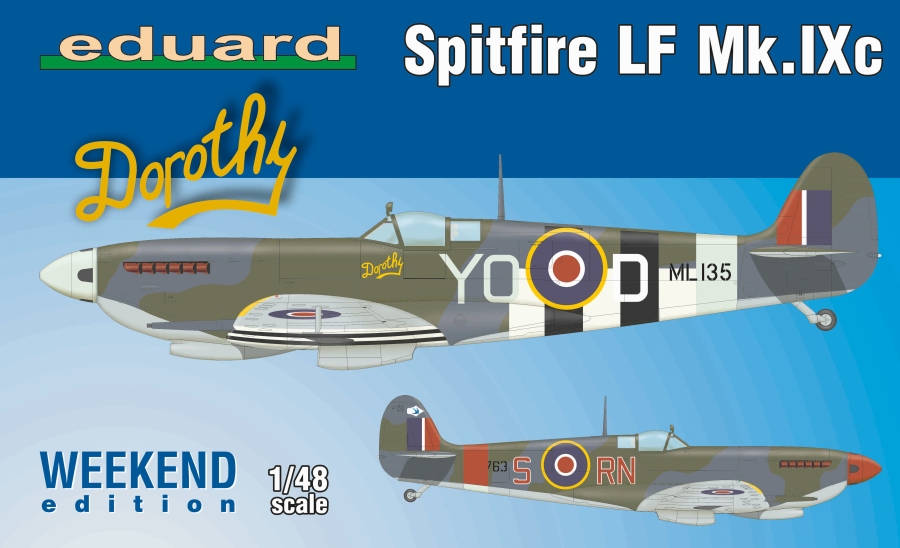Modely
Celkem 473 produktů
Plastikový model letadla 1/72 Caudron C-445/448 4 decal v. for France, Spain. Caudron C-455 was a conventionally configured low-wing cantilever monoplane with tailwheel undercarriage. The main undercarriage units retracted into the engine nacelles. Construction was wooden throughout, with wooden skinning everywhere but the forward and upper fuselage sections, which were skinned in metal. As usually configured, the cabin seated six passengers with baggage compartments fore and aft, and a toilet aft. 4 decal variants1. Caudron 448 Goéland, N°7272 F-AOMX, Course Paris-Saïgon, 1936 2. Caudron 445 Goéland, N°8712, GC I/55, France, June 1940 3. Caudron 445 Goéland, 2T-11, Mouzaiaville, Algeria, June 1944 4. Caudron 448 Goéland, N°7272, ex. F-AOMX, Grupo de Caza 26, 1937
Plastikový model letadla 1/72 Caudron C-445/448 4 decal v. for France, Spain. Caudron C-455 was a conventionally configured low-wing cantilever monoplane with tailwheel undercarriage. The main undercarriage units retracted into the engine nacelles. Construction was wooden throughout, with wooden skinning everywhere but the forward and upper fuselage sections, which were skinned in metal. As usually configured, the cabin seated six passengers with baggage compartments fore and aft, and a toilet aft. 4 decal variants1. Caudron 448 Goéland, N°7272 F-AOMX, Course Paris-Saïgon, 1936 2. Caudron 445 Goéland, N°8712, GC I/55, France, June 1940 3. Caudron 445 Goéland, 2T-11, Mouzaiaville, Algeria, June 1944 4. Caudron 448 Goéland, N°7272, ex. F-AOMX, Grupo de Caza 26, 1937
1/48 Messerschmitt Bf109 Crosses + Stencils - Wet Transfers - various manufacturers. Crosses and stencils for Messerschmitt Bf109 in 1/48 scale. Wet transfer technology means that decal doesn't leave any signs of varnish or typical film after its application, so only text or symbols stay attached to the surface. The biggest issue relating to using ordinary decals is the varnish which creates a glossy film around the decal. It is quite hard to work with classic decals the way to make this film invisible and it is impossible to reach a good result in case of metallic surfaces. OK, there are dry transfers on the market but work with them is also quite uncomfortable, it is hard to place them correctly and a modeler has the one chance only. HGW's wet transfers are similar to ordinary decals. It is possible to move them during the attaching process and find the best position. Then just push the water from below the transfer, let it dry few hours, remove the transfer foil and work is done. Only text or symbol stays attached to the surface. Instructions: 1. Cut the required part.2. Soak in hot water and wait till the decal loose its base-paper.3. Apply as regular decal.4. Push the water from below the decal.5. Let it dry for 2-3 hours.6. Remove the transfer foil and clean the glue stains with water.
1/48 Messerschmitt Bf109 Crosses + Stencils - Wet Transfers - various manufacturers. Crosses and stencils for Messerschmitt Bf109 in 1/48 scale. Wet transfer technology means that decal doesn't leave any signs of varnish or typical film after its application, so only text or symbols stay attached to the surface. The biggest issue relating to using ordinary decals is the varnish which creates a glossy film around the decal. It is quite hard to work with classic decals the way to make this film invisible and it is impossible to reach a good result in case of metallic surfaces. OK, there are dry transfers on the market but work with them is also quite uncomfortable, it is hard to place them correctly and a modeler has the one chance only. HGW's wet transfers are similar to ordinary decals. It is possible to move them during the attaching process and find the best position. Then just push the water from below the transfer, let it dry few hours, remove the transfer foil and work is done. Only text or symbol stays attached to the surface. Instructions: 1. Cut the required part.2. Soak in hot water and wait till the decal loose its base-paper.3. Apply as regular decal.4. Push the water from below the decal.5. Let it dry for 2-3 hours.6. Remove the transfer foil and clean the glue stains with water.
Plastikový model letadla 1/72 Boston MK.III Intruder. Model of the US WW2 two-engined aircraft in a version used by the British in the night fighter and intruder roles. The kit consists of seven styrene sprues which feature also the underbelly machine gun pod for the Intruder machines and the Havoc Mk.II night fighter style nose section, one clear styrene sprue, decal sheet, resin parts and photo etches. this version has never been kitted before decals cater for four marking schemes, two Intruders and two Havoc Mk.III‘s photo etched antenna array parts finely detailed Hedgehog style exhausts Country of origin: UK / WWII
Plastikový model letadla 1/72 Boston MK.III Intruder. Model of the US WW2 two-engined aircraft in a version used by the British in the night fighter and intruder roles. The kit consists of seven styrene sprues which feature also the underbelly machine gun pod for the Intruder machines and the Havoc Mk.II night fighter style nose section, one clear styrene sprue, decal sheet, resin parts and photo etches. this version has never been kitted before decals cater for four marking schemes, two Intruders and two Havoc Mk.III‘s photo etched antenna array parts finely detailed Hedgehog style exhausts Country of origin: UK / WWII
Plastikový model letadla 1/72 SH 89 / CASA C.212 'ASW & Maritime Patrol' . The CASA C.212 is a Spanish turboprop-powered STOL cargo aircraft that has seen service with a wide range of countries and flew in many different roles, one of them being maritime surveillance and patrol. Machines fitted for this sort of tasks carry radar antennae in distinctive, duck beak like shaped radomes at the front of the fuselage as well as some more electronics equipment within the airframe. Highly accurate and nicely detailed model Precisely designed sheet of decals offering markings for two Swedish airframes in different colour schemes, one Malta-based machine and a Spanish one. Specific antenna arrays made of resin and photo-etches Double-slotted wing flaps – resin set no.7407 – is recommended for discerning modeller
Plastikový model letadla 1/48 Reggiane Re 2000 I. Serie. Just before the outbreak of WW2, the Reggiane Re 2000 took part in the competition for the standard fighter which was to serve with the Italian air force. Even though the type offered quite high performance, it eventually did not win, so the most of the production was offered for export. The Regia Aeronautica, however, decided to give the type a try and deployed it mainly in the dangerous operations against Malta. The model kit contains four styrene sprues and one with clear parts. The wing sprue has its origins in the Classic Airframes kit while all the other components are brand new, the small ones being produced from metal moulds. Italian WW2 fighter aeroplane three eye-catching marking options bearing the Italian mottle camouflage pattern we also offer separate resin sets and pre-cut masks
Plastikový model letadla 1/48 Reggiane Re 2000 I. Serie. Just before the outbreak of WW2, the Reggiane Re 2000 took part in the competition for the standard fighter which was to serve with the Italian air force. Even though the type offered quite high performance, it eventually did not win, so the most of the production was offered for export. The Regia Aeronautica, however, decided to give the type a try and deployed it mainly in the dangerous operations against Malta. The model kit contains four styrene sprues and one with clear parts. The wing sprue has its origins in the Classic Airframes kit while all the other components are brand new, the small ones being produced from metal moulds. Italian WW2 fighter aeroplane three eye-catching marking options bearing the Italian mottle camouflage pattern we also offer separate resin sets and pre-cut masks
1/72 Il-2 Tamiya. Vzdušné brnění v dlani Iljušin IL-2 Šturmovik byl během druhé světové války hlavním pozemním útočným letounem ruské armády a do konce války bylo vyrobeno více než 36 000 příkladů. Výroba jednomístné verze IL-2 byla zahájena v březnu 1941, ale velké ztráty vedly k vývoji dvoumístné verze se zadním střelcem. Na konci roku 1943 byla představena verze, která obsahovala části vnějšího křídla, které se posunuly zpět o 15 stupňů pro lepší těžiště. Spolu s tankem T-34 Il-2 významně přispěl k případnému ruskému vítězství. O modelu Plastiková stavebnice modelu Ilyushin IL-2 Shturmovik v měřítku 1/72. Délka: 162 mm Šířka: 203 mm. Přesně reprodukuje robustní tvar letadla a nabízí snadnou montáž. Sací potrubí, stejně jako části chladiče a chladiče oleje umožňují přesnou reprodukci mechanismu chladiče. Dvoumístný kokpit a otvor pro kola mají také bohatou povrchovou úpravu. Zahrnuje dva typy kapotáže děla 23 mm. Zahrnuty jsou také díly pro 100 kg a 250 kg bomby a tři typy odpalovacích kolejnic pro rakety RS-132. Vyberte si ze tří typů označení.
1/72 Il-2 Tamiya. Vzdušné brnění v dlani Iljušin IL-2 Šturmovik byl během druhé světové války hlavním pozemním útočným letounem ruské armády a do konce války bylo vyrobeno více než 36 000 příkladů. Výroba jednomístné verze IL-2 byla zahájena v březnu 1941, ale velké ztráty vedly k vývoji dvoumístné verze se zadním střelcem. Na konci roku 1943 byla představena verze, která obsahovala části vnějšího křídla, které se posunuly zpět o 15 stupňů pro lepší těžiště. Spolu s tankem T-34 Il-2 významně přispěl k případnému ruskému vítězství. O modelu Plastiková stavebnice modelu Ilyushin IL-2 Shturmovik v měřítku 1/72. Délka: 162 mm Šířka: 203 mm. Přesně reprodukuje robustní tvar letadla a nabízí snadnou montáž. Sací potrubí, stejně jako části chladiče a chladiče oleje umožňují přesnou reprodukci mechanismu chladiče. Dvoumístný kokpit a otvor pro kola mají také bohatou povrchovou úpravu. Zahrnuje dva typy kapotáže děla 23 mm. Zahrnuty jsou také díly pro 100 kg a 250 kg bomby a tři typy odpalovacích kolejnic pro rakety RS-132. Vyberte si ze tří typů označení.
Plastikový model letadla 1/72 SH 89 / CASA C.212 'ASW & Maritime Patrol' . The CASA C.212 is a Spanish turboprop-powered STOL cargo aircraft that has seen service with a wide range of countries and flew in many different roles, one of them being maritime surveillance and patrol. Machines fitted for this sort of tasks carry radar antennae in distinctive, duck beak like shaped radomes at the front of the fuselage as well as some more electronics equipment within the airframe. Highly accurate and nicely detailed model Precisely designed sheet of decals offering markings for two Swedish airframes in different colour schemes, one Malta-based machine and a Spanish one. Specific antenna arrays made of resin and photo-etches Double-slotted wing flaps – resin set no.7407 – is recommended for discerning modeller
1/35 FMG 39 / FuSE 62 D Würzburg. Mobiles Funk-Messgerät / Flak-Messgerät / Funk-Sende-Empfangsgerät German WW2 Gun Laying Radar Product Details Highly detailed static plastic model Accurate details of D version Parabolic mirror foldable as in real Radar unit traversable and elevatable Finest bolt details Dipol DE 62 additional antennae included
1/35 FMG 39 / FuSE 62 D Würzburg. Mobiles Funk-Messgerät / Flak-Messgerät / Funk-Sende-Empfangsgerät German WW2 Gun Laying Radar Product Details Highly detailed static plastic model Accurate details of D version Parabolic mirror foldable as in real Radar unit traversable and elevatable Finest bolt details Dipol DE 62 additional antennae included
Plastikový model letadla 1/72 Blohm & Voss Ae 607 "Nightfighter" 4 decal v. for Luftwaffe. This flying wing fighter was only a study and was not included on the Project list. Because the HeS 011 jet engine was chosen as the power plant, the cockpit had to be moved off-center. The wing had a compound sweep, starting at 65 degrees and changing to 55 degrees. There were two fuel tanks, located in tandem on the starboard side of the air intake. Three MK 108 30 mm cannon were planned for the armament.
Plastikový model letadla 1/72 Blohm & Voss Ae 607 "Nightfighter" 4 decal v. for Luftwaffe. This flying wing fighter was only a study and was not included on the Project list. Because the HeS 011 jet engine was chosen as the power plant, the cockpit had to be moved off-center. The wing had a compound sweep, starting at 65 degrees and changing to 55 degrees. There were two fuel tanks, located in tandem on the starboard side of the air intake. Three MK 108 30 mm cannon were planned for the armament.
1/48 Ox Towing Me 163B with a Luftwaffe Ground Crew. At the final stages of WW2, the Third Reich faced serious shortage of fuel and to save the maximum amount possible, draft animals were used for taxiing aircraft on airfields, too. Even the most advanced jet and rocket-powered military aircraft such as the Me 262 or Me 163 were often seen in 1945 being towed like a mere middle ages style ox cart. This set contains a figure of a Luftwaffe groundcrew with a draft animal ready to tow a Me 163 Komet on the airfield (the figures have been sculpted based on a period photo. However, a photo of a Bf 109G being towed by such poor animal exists too). The draft animal offered in our set can be used in any other type of diorama as well. Country: Germany / WWII
1/32 Luftwaffe Ground Crew Pulling V1 on Trolley . To accompany our Fieseler Fi 103/ V-1 a SH32074 Fi 103A-1/ Re 4 Reichenberg model kits, our designers have sculpted two Luftwaffe ground crew member figures who are, in quite a relaxed manner, pulling a trolley with the V1 missile. This set can be utilized in a differend kind of diorama, too. Nationality: Germany / WWII
Plastikový model letadla 1/72 Blohm and Voss Ae 607 4 decal v. for Luftwaffe, Great Britain. Early in 1945, a Blohm & Voss (B&V) aircraft designer called Thieme began work on Drawing Number Ae 607, within the standard drawing numbering system at B&V. His design for a jet fighter was radically different from anything that B&V had done before. A flying wing, it approximated to a 45° delta planform. Reports of its existence were not confirmed until 2017, when the drawing was published. No Project number is recorded for the design and its intended status is unknown.[
Plastikový model letadla 1/72 Bücker Bü-131 B 5 decal v. for Switz, Bulgaria, Luftw., Spain, Finland. 5 decal variants1. Bücker 131B, Swiss AF, Lst, FL.Kp.55, Januar 19452. Bücker 131B, Spain AF, Tablada 19373. Bücker 131B, D-EBZE, Berlin Rangdorf 19374. Bücker 131B, Bulgarian AF, Airfield Sofia-Bozuriste 19405. Bücker 131B, Finnish Aeroclub, 1940The Bücker 131 was a biplane for aerobatic and training use. Was designed by Anders J. Anderson and first flew on April 1934. Production of the Bü 131A powered by an 80hp Hirth HM 60R began in the same year. First aircraft were delivered to the Luftwaffe in 1935 year. During 1936, was produced Bü 131B with powerful 105hp Hirth HM 504A-2 engine. Most produced was the version D. The aircraft was used by Luftwaffe as training, also by night ground-attack. Was also exported in many countries - Japan, Switzerland, Spain, Yugoslavia, Romania and Bulgaria. Under licence was built in Japan and after WWII also in Spain-CASA and Czechoslovakia as C-104 trainer with Walter Minor 4-III.
Plastikový model letadla 1/72 Avia B-135 3 decal v. for Luftwaffe, Bulgaria. 3 decal variants1. Avia B-135 - flown on 30th March, 1944 by Jordan Ferdinandov, Bulgaria2. Avia B-135 - FVA Flugtechnische Versuchsanstalt Prag, Letnany 19403. Avia B-135 - Aviation school Dolna Mitropolya, Bulgaria, 1944During the summer of 1939, ing. Novotný and his team initiated considerable re-design and refiment of the B.35, and a new prototype, the B-135, was completed late in the year. The fuselage of the B-135 was essentially similar to that of the B.35.3, the HS 12 Ycrs engine and armament of one 20 mm cannon and two 7,7 mm machine guns were retained, as was the hydraulically-recractable main undercarriage members of the B.35.3 prototype, but a controllable-pitchairscrew was introduced, the rudder was enlarged, and an entirely new wing of all-metal construction was fitted.
Plastikový model letadla 1/72 Caudron CR.714 C-1 4 decal v. for France, Luftwaffe, Finland. 4 decal variants1. Caudron CR-714, 2nd Esc. GC 1/145, Dreux, A. Niewiara, June 19402. Caudron CR-714, 1st Esc. GC 1/145, Villacoublay, L. Uher, May 19403. Caudron CR-714, Finland, May 19414. Caudron CR-714, test aicraft, Luftwaffe 1940The first prototype was test flown in July 1938 and the first production machine, powered by a Renault 12R-03, was delivered in July 1939. The armament consisted of four 7,5mm MAC 1934 machine guns located in two wing gondolas. Only GC 1-145 was equipped with the Caudron C.714. It was a unit composed of Polish pilots under French command. They fought against the Luftwaffe in spring 1940 and despite the aircraft climbing, the highly battle motivated Polish pilots scored 8 confirmed victories with an overall loss of 7 pilots. Until the fall of France, more than 60 machines were produced and several were in progress. At least one machine was tested by the Luftwaffe.
Plastikový model letadla 1/72 Caudron CR.714 C-1 4 decal v. for France, Luftwaffe, Finland. 4 decal variants1. Caudron CR-714, 2nd Esc. GC 1/145, Dreux, A. Niewiara, June 19402. Caudron CR-714, 1st Esc. GC 1/145, Villacoublay, L. Uher, May 19403. Caudron CR-714, Finland, May 19414. Caudron CR-714, test aicraft, Luftwaffe 1940The first prototype was test flown in July 1938 and the first production machine, powered by a Renault 12R-03, was delivered in July 1939. The armament consisted of four 7,5mm MAC 1934 machine guns located in two wing gondolas. Only GC 1-145 was equipped with the Caudron C.714. It was a unit composed of Polish pilots under French command. They fought against the Luftwaffe in spring 1940 and despite the aircraft climbing, the highly battle motivated Polish pilots scored 8 confirmed victories with an overall loss of 7 pilots. Until the fall of France, more than 60 machines were produced and several were in progress. At least one machine was tested by the Luftwaffe.
Plastikový model letadla 1/72 Avia B-135 3 decal v. for Luftwaffe, Bulgaria. 3 decal variants1. Avia B-135 - flown on 30th March, 1944 by Jordan Ferdinandov, Bulgaria2. Avia B-135 - FVA Flugtechnische Versuchsanstalt Prag, Letnany 19403. Avia B-135 - Aviation school Dolna Mitropolya, Bulgaria, 1944During the summer of 1939, ing. Novotný and his team initiated considerable re-design and refiment of the B.35, and a new prototype, the B-135, was completed late in the year. The fuselage of the B-135 was essentially similar to that of the B.35.3, the HS 12 Ycrs engine and armament of one 20 mm cannon and two 7,7 mm machine guns were retained, as was the hydraulically-recractable main undercarriage members of the B.35.3 prototype, but a controllable-pitchairscrew was introduced, the rudder was enlarged, and an entirely new wing of all-metal construction was fitted.
Plastikový model letadla 1/72 Bücker Bü-131 B 5 decal v. for Switz, Bulgaria, Luftw., Spain, Finland. 5 decal variants1. Bücker 131B, Swiss AF, Lst, FL.Kp.55, Januar 19452. Bücker 131B, Spain AF, Tablada 19373. Bücker 131B, D-EBZE, Berlin Rangdorf 19374. Bücker 131B, Bulgarian AF, Airfield Sofia-Bozuriste 19405. Bücker 131B, Finnish Aeroclub, 1940The Bücker 131 was a biplane for aerobatic and training use. Was designed by Anders J. Anderson and first flew on April 1934. Production of the Bü 131A powered by an 80hp Hirth HM 60R began in the same year. First aircraft were delivered to the Luftwaffe in 1935 year. During 1936, was produced Bü 131B with powerful 105hp Hirth HM 504A-2 engine. Most produced was the version D. The aircraft was used by Luftwaffe as training, also by night ground-attack. Was also exported in many countries - Japan, Switzerland, Spain, Yugoslavia, Romania and Bulgaria. Under licence was built in Japan and after WWII also in Spain-CASA and Czechoslovakia as C-104 trainer with Walter Minor 4-III.
Plastikový model letadla 1/72 Avro Rota C.30A 4 decal v. for Czeczslovak.,RAF, Yugoslavia, Australia. The first production design in the series was the C.30, a radial-engined autogyro with a three-blade, 37 ft (11.3 m) rotor mounted on an aft-leaning tripod, the control column extending into the rear of the two cockpits. The engine was the five-cylinder, 105 hp (78 kW) Armstrong Siddeley Genet Major I used in the C.19 series. The fabric-covered fuselage carried an unbraced tailplane, without elevators but with turned-up tips. The port side of the tailplane had an inverted aerofoil section to counter roll-axis torque produced by the propeller. As with most autogyros, a high vertical tail was precluded by the sagging resting rotor, so the dorsal fin was long and low, extending well aft of the tailplane like a fixed rudder and augmented by a ventral fin. The wide-track undercarriage had a pair of single, wire-braced legs and a small tail wheel was fitted. This model flew in April 1933. It was followed by four improved machines designated C.30P (P here for pre-production) which differed in having a four-legged pyramid rotor mounting and a reinforced undercarriage with three struts per side. The rotor could be folded rearwards for transport. The C.30P used the more powerful (140 hp, 104 kW) seven-cylinder Armstrong Siddeley Genet Major IA radial engine.
Plastikový model letadla 1/72 Avro Rota C.30A 4 decal v. for Czeczslovak.,RAF, Yugoslavia, Australia. The first production design in the series was the C.30, a radial-engined autogyro with a three-blade, 37 ft (11.3 m) rotor mounted on an aft-leaning tripod, the control column extending into the rear of the two cockpits. The engine was the five-cylinder, 105 hp (78 kW) Armstrong Siddeley Genet Major I used in the C.19 series. The fabric-covered fuselage carried an unbraced tailplane, without elevators but with turned-up tips. The port side of the tailplane had an inverted aerofoil section to counter roll-axis torque produced by the propeller. As with most autogyros, a high vertical tail was precluded by the sagging resting rotor, so the dorsal fin was long and low, extending well aft of the tailplane like a fixed rudder and augmented by a ventral fin. The wide-track undercarriage had a pair of single, wire-braced legs and a small tail wheel was fitted. This model flew in April 1933. It was followed by four improved machines designated C.30P (P here for pre-production) which differed in having a four-legged pyramid rotor mounting and a reinforced undercarriage with three struts per side. The rotor could be folded rearwards for transport. The C.30P used the more powerful (140 hp, 104 kW) seven-cylinder Armstrong Siddeley Genet Major IA radial engine.
Plastikový model letadla 1/72 Blohm and Voss Ae 607 4 decal v. for Luftwaffe, Great Britain. Early in 1945, a Blohm & Voss (B&V) aircraft designer called Thieme began work on Drawing Number Ae 607, within the standard drawing numbering system at B&V. His design for a jet fighter was radically different from anything that B&V had done before. A flying wing, it approximated to a 45° delta planform. Reports of its existence were not confirmed until 2017, when the drawing was published. No Project number is recorded for the design and its intended status is unknown.[
Plastikový model letadla 1/72 SB2A-4 Buccaneer ‘US Marines Bomber’ . The SB2A dive bomber aircraft was designed by Brewster during WW2 to be operated primarily from aircraft carriers. Although the type was produced in several various versions, it was used only for training. The British military used the type under their own name of Bermuda. A similar version was also developed for the air force of Dutch East Indies (ML-KNIL), but in the end was not delivered as the Dutch surrendered. The SB2A-3 saw service with the US Navy whilst the dash 4 variety, as brought to you in our recent release, belonged to the US Marines inventory. The decal sheet offers markings for three US Marines airframes bearing both the two- and three-colour schemes and one fictious machine as it might have looked like had it been acquired by the Dutch. US naval dive bomber the SB2A-4 was operated by the Marines decals for three US Marines options and one as would have been flown by Dutch East Indies (they in fact wanted to buy the type) the kit contains resin parts and etches
Plastikový model letadla 1/72 SB2A-4 Buccaneer ‘US Marines Bomber’ . The SB2A dive bomber aircraft was designed by Brewster during WW2 to be operated primarily from aircraft carriers. Although the type was produced in several various versions, it was used only for training. The British military used the type under their own name of Bermuda. A similar version was also developed for the air force of Dutch East Indies (ML-KNIL), but in the end was not delivered as the Dutch surrendered. The SB2A-3 saw service with the US Navy whilst the dash 4 variety, as brought to you in our recent release, belonged to the US Marines inventory. The decal sheet offers markings for three US Marines airframes bearing both the two- and three-colour schemes and one fictious machine as it might have looked like had it been acquired by the Dutch. US naval dive bomber the SB2A-4 was operated by the Marines decals for three US Marines options and one as would have been flown by Dutch East Indies (they in fact wanted to buy the type) the kit contains resin parts and etches
Plastikový model letadla 1/32 Fieseler Fi 103 / V-1. A model of the German unmanned missile, the infamous V-1 flying bomb which was designed and used for terror bombing of London and the UK. When the Allies invaded France, the missiles were also aimed at Antwerp, Liege and Brussels, both from land-based launch sites and aircraft. The kit contains three grey styrene sprues, a decal sheet and full colour instruction leaflet. The decals cater for three machines wearing different styles of camouflage schemes. detailed and extremely accurate model never kitted before in this scale contains not just the missile, but its handling trolley too the camouflage options show different types of colour schemes worn accurate decals with stencils
Plastikový model letadla 1/32 Fieseler Fi 103 / V-1. A model of the German unmanned missile, the infamous V-1 flying bomb which was designed and used for terror bombing of London and the UK. When the Allies invaded France, the missiles were also aimed at Antwerp, Liege and Brussels, both from land-based launch sites and aircraft. The kit contains three grey styrene sprues, a decal sheet and full colour instruction leaflet. The decals cater for three machines wearing different styles of camouflage schemes. detailed and extremely accurate model never kitted before in this scale contains not just the missile, but its handling trolley too the camouflage options show different types of colour schemes worn accurate decals with stencils
Plastikový model letadla 1/72 A.W. Meteor NF MK.12. The final generation of the Meteor jet fighters was produced by Armstrong Whitworth. Unlike the earlier versions, these were two-seater, night and all-weather fighter machines equipped with a radar in the nose. In the early stages of the Cold War, they defended the UK against the threat of Soviet bombers carrying nuclear weapons. The Meteor Mk.12 version was fitted with a US-manufactured APS-21 radar known as the AI Mk.21 in RAF service. The best 1/72 NF Meteor kits currently available (Matchbox kits were released in 1987)Highly detailed small partsFour RAF marking schemes
Plastikový model letadla 1/72 A.W. Meteor NF MK.12. The final generation of the Meteor jet fighters was produced by Armstrong Whitworth. Unlike the earlier versions, these were two-seater, night and all-weather fighter machines equipped with a radar in the nose. In the early stages of the Cold War, they defended the UK against the threat of Soviet bombers carrying nuclear weapons. The Meteor Mk.12 version was fitted with a US-manufactured APS-21 radar known as the AI Mk.21 in RAF service. The best 1/72 NF Meteor kits currently available (Matchbox kits were released in 1987)Highly detailed small partsFour RAF marking schemes
1/48 Spitfire Mk.IXe. Scale plastic kit Spitfire Mk.IXe in 1/48 scale.British WWII fighter, released in Weekend Editionplastic parts: EduardNo. of decal options: 1Decals: EduardPE parts: nopainting mask: noResin parts: noMarking option:LF Mk.IXe, TE570, Letecký pluk 7, airfield Praha-Kbely, september 1946Model length: 202 mmWingspan: 235 mmPlastic parts: 207Made in Czech Republic.
1/48 Spitfire Mk.IXe. Scale plastic kit Spitfire Mk.IXe in 1/48 scale.British WWII fighter, released in Weekend Editionplastic parts: EduardNo. of decal options: 1Decals: EduardPE parts: nopainting mask: noResin parts: noMarking option:LF Mk.IXe, TE570, Letecký pluk 7, airfield Praha-Kbely, september 1946Model length: 202 mmWingspan: 235 mmPlastic parts: 207Made in Czech Republic.
